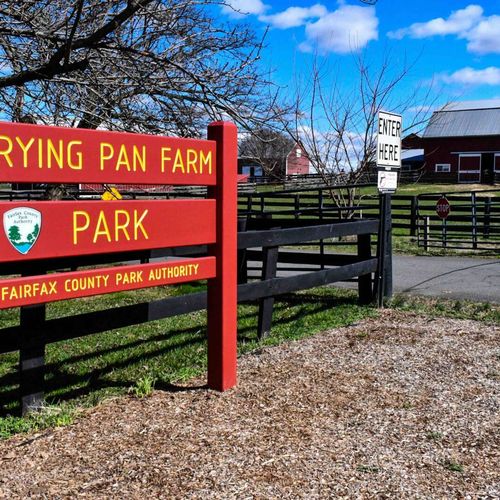Reston National Golf Course Redevelopment: A Community Crossroads
Why Reston National Matters to Reston Real Estate & Quality of Life
At 168 acres, Reston National Golf Course (RNGC) is one of the largest contiguous green spaces in Northern Virginia, threading together neighborhoods south of the Dulles Toll Road. Beyond the fairways and putting greens, the land provides stormwater absorption, wildlife habitat, and a welcome visual buffer amid ever‑denser Reston real estate. That environmental value helped spur the creation of Rescue Reston, a grassroots nonprofit determined to keep both of Reston’s private golf courses forever green.
View this post on Instagram
Reston National Golf Course Redevelopment Proposals Explained
Earlier this month, property owner War Horse Cities, working with homebuilder NVR, submitted two parallel applications to Fairfax County:
| Proposal | Acreage | Key Elements | Approval Path |
|---|---|---|---|
| Site‑Specific Plan Amendment (SSPA) | 86.7 ac housing + 80 ac open space | • Mid‑rise and stacked‑townhome neighborhood • Linear park, playgrounds, dog parks, pollinator gardens |
Requires Board of Supervisors to amend the Comprehensive Plan (FFXnow coverage) |
| PRC Plan Amendment (By‑Right) | 14 ac | • 288 stacked townhomes • Re‑configured 9‑hole layout • Multi‑story, lighted driving range (“Toptracer”‑style) • New “Back 9 Grill” clubhouse |
Can proceed under 1966 zoning without public hearings, though county staff review is required |
Developers argue that only 15 percent of current golfers are Reston residents, and that unused fairways could be converted into public parkland while still adding much-needed homes close to the Silver Line Metro.
Why Some Residents Oppose Reston National Golf Course Redevelopment
Local opposition is fierce and organized. Rescue Reston contends that RNGC’s “open recreation” land‑use designation is part of Reston’s founding vision—and that speculative investors knowingly overpaid in 2019, banking on a future rezoning. Key concerns include:
-
Environmental impact: tree removal, runoff, and loss of migratory‑bird habitat documented through the Audubon International Cooperative Sanctuary Program.
-
Quality‑of‑life: more traffic on Sunrise Valley Dr. and longer school‑bus routes if 300–1,000 new residents arrive.
-
Trust deficit: critics say course‑maintenance lapses—no frost delays, little turf investment—are meant to justify redevelopment.
The Pro‑Housing & Amenities Perspective
Reston is not immune to Northern Virginia’s housing crunch. Across Fairfax County, the Board of Supervisors set a goal of 10,000 new affordable or workforce units by 2034. Supporters—including local YIMBY (“Yes In My Back Yard”) advocates—say:
-
Transit proximity: RNGC is situated between the Wiehle-Reston East and Reston Town Center Metro stations; increasing the number of residents could boost Silver Line ridership.
-
Recreation for everyone: Unlike an 18‑hole course serving mostly paying golfers, new linear parks, playgrounds, and bike paths would be open to all Restonians.
-
Modern golf stays: The PRC plan keeps golf but adds a lighted range—something missing elsewhere in Fairfax County.
-
Workforce housing: Developers pledge to set aside 12–13 percent of new units as Affordable or Workforce Dwelling Units.
Where Fairfax County Officials Stand
Hunter Mill District Supervisor Walter Alcorn has reiterated that he will support a Comprehensive Plan change only if the surrounding neighborhoods request it. Meanwhile, county staff have placed the RNGC nomination into the screening phase of the 2025 Countywide SSPA. You can follow its progress on the county’s interactive SSPA nomination map; the Board of Supervisors is slated to vote on June 10, 2025.
A Third Way: Reimagining Open Space Without All‑or‑Nothing Thinking
Rather than framing the debate as golf‑course‑forever versus high‑density housing, Reston could explore innovative middle‑ground solutions:
-
Nine‑Hole “Short Course” + Community Park – Keep golf in a smaller footprint while converting surplus fairways into multi‑use trails, adventure playgrounds, and native meadows.
-
Public‑Private Sports & Wellness Hub – Partner with Fairfax County Park Authority to add pickleball courts, a cross‑country loop, and an outdoor pool—funded in part by a modest townhouse enclave on the perimeter.
-
Environmental Education & Agro‑Ecology – Establish community garden plots and a demonstration food forest, partnering with local schools for hands‑on STEM lessons.
-
Land‑Trust Model for Workforce Housing – Dedicate 10–15 acres for permanently affordable townhomes held in a community land trust, with proceeds underwriting park upkeep.
-
Regional Trail Connector – Use the course’s east‑west span to create a “green lane” linking the Fairfax Cross County Trail to Reston Town Center’s paths.
How These Alternatives Could Serve More Restonians
-
Health & Wellness: Walkable loops, dog parks, and gardens offer year‑round recreation—not just tee‑times.
-
Economic Balance: Limited housing unlocks revenue and affordability without overwhelming schools or roads.
-
Environmental Resilience: Restoring stream buffers and planting native meadows improves storm‑water filtration and reduces maintenance costs.
-
Community Identity: Bob Simon’s vision of “open space for all” lives on in a blended plan that meets 21st‑century needs.
Key Takeaways for Homeowners & Future Buyers
-
Major rezonings can take 5–10 years from concept to groundbreaking—so nothing changes overnight.
-
Even if the Comprehensive Plan stays golf‑only, the PRC townhome plan could advance sooner, adding nearly 300 new neighbors on the course’s western edge.
-
Property values near the course may see short‑term uncertainty but typically stabilize once a clear plan—and park upgrades—are finalized.
-
Staying engaged is easy: bookmark Fairfax County’s SSPA portal and sign up for meeting alerts.
Final Thoughts: Choosing Collaboration Over Confrontation
Whether you consider yourself a golf purist, a tree‑hugger, or a hopeful first‑time homebuyer, one truth unites us: Reston’s identity hinges on thoughtful planning. The current all‑or‑nothing showdown risks missing an opportunity to create something truly special—a place where birdies and bike rides, townhomes and tulips, can all share the same 168 acres.
If the community, developers, and county leaders lean into collaboration, the Reston National Golf Course Redevelopment could evolve from a zero‑sum fight into a showcase of smart growth and shared green space for the next generation of Restonians. Let’s keep the conversation open, the ideas flowing, and the fairways—whether nine or eighteen—accessible for all.




